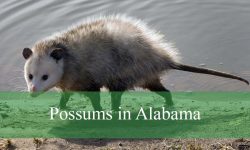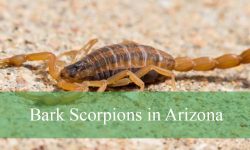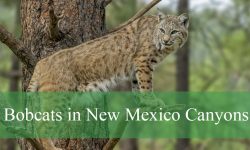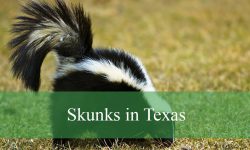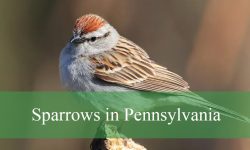If you’ve ever driven along Florida highways during late spring or early fall, you’ve seen them—small black insects flying in pairs, splattering across windshields, clinging to bumpers, coating headlights, and forming dense clouds that drivers must push through. These are lovebugs, one of the most iconic and misunderstood seasonal phenomena in the Southeast. To many Floridians, they are simply an annoyance—another part of life in a warm, humid state. Yet beneath their reputation as car-ruiners lies a surprisingly fascinating story rooted in ecology, climate, soil biology, and evolutionary adaptation.
Despite their messy reputation, the lovebugs in Florida highways are part of a much larger natural system. They are decomposers, nutrient recyclers, ecological indicators, and participants in seasonal cycles that directly reflect the health of Florida’s soil and wetlands. And while their sudden emergences seem mysterious, these population booms follow predictable environmental cues that scientists have studied for decades.
This comprehensive guide reveals everything most people never hear about lovebugs: their biology, behavior, misunderstood origins, surprising benefits, and the environmental mechanics behind their synchronized swarms. Whether you find them irritating or intriguing, there is far more to Florida’s lovebugs than meets the eye—and definitely more than what sticks to the front of your car.
Lovebugs in Florida: More Than Just a Highway Nuisance
What Exactly Are Lovebugs?

Lovebugs (Plecia nearctica) belong to the March fly family. They are small, black-bodied insects with bright red or orange thoraxes, often seen attached in pairs during flight. Though they appear awkward and almost comical, their paired behavior reflects a highly efficient mating cycle shaped by Florida’s warm climate and moisture-rich soils.
Not Lab-Made
One of the most persistent legends about lovebugs in Florida is that they were genetically engineered at the University of Florida to control mosquitoes. This myth is entirely false. In reality, lovebugs naturally migrated from Central America into the Gulf Coast region throughout the early 20th century. Florida’s climate simply accelerated their population growth.
Their Rapid Spread
By the 1940s, lovebugs were well-established in North Florida. By the 1970s, they were common throughout the entire state. From Panama City to Miami and from the Everglades to the Georgia border, lovebugs found an ecological paradise that supported multiple generations each year.
Appearance and Adaptations
A Small Insect With Powerful Traits
Adult lovebugs measure only 6–9 mm long. Their small size hides several evolutionary advantages:
-
Black bodies absorb heat efficiently.
-
Red/orange thoraxes are believed to aid species recognition.
-
Long legs assist in pairing during flight.
-
Lightweight structure improves mating stability.
Although harmless, their synchronized flights and paired movements create the impression of much larger swarms than actually exist.
Built for Reproduction
Lovebugs live extremely short adult lives—typically 3–5 days. Almost every trait they possess is optimized for rapid reproduction:
-
Males are smaller, lighter, and designed for extended attachment.
-
Females have large abdomens for egg production.
-
Adults do not feed, conserving energy for mating.
This specialization explains why they seem to appear suddenly and then disappear almost as quickly.
Why Lovebugs Swarm Florida Highways
Lovebugs in Florida highways behavior
Attracted to Heat and Exhaust
Although lovebugs do not intentionally target cars, several highway features attract them:
-
Warm asphalt creates rising heat columns.
-
Car exhaust contains chemicals similar to those emitted by decaying vegetation—their natural egg-laying attractant.
-
Shiny surfaces reflect light patterns that confuse mating pairs.
-
Open roadways provide unobstructed flight paths for pair bonding.
These factors combine to make Florida highways a perfect concentration zone for adult lovebugs.
Why They Hit Windshields So Easily
Lovebugs fly slowly—usually only 5–7 mph. When faced with 60–70 mph traffic, they simply cannot escape. This is why they appear to “aim” at cars even though they are not intentionally drawn to them.
Life Cycle: The Part Most Floridians Never See
Larvae: The Real Workers
Lovebug larvae spend the majority of their lives underground, feeding on moist organic matter. Their role is critical to Florida’s ecosystem:
-
They break down decaying vegetation.
-
They help create nutrient-rich soil.
-
They speed up decomposition in lawns, fields, and pastures.
The moist soils of Florida—especially around wetlands, pine flatwoods, and suburban yards—provide perfect conditions for larval development.
When Lovebugs Emerge
Adults emerge twice annually:
-
April–May
-
August–September
These emergence waves are triggered by a combination of soil temperature, humidity, and photoperiod (day length). Once conditions align, thousands of adults emerge simultaneously.
Adult Behavior
Once they reach adulthood:
-
They mate almost immediately.
-
Females lay hundreds of eggs in organic-rich soil.
-
Adults die shortly after mating and egg-laying.
This rapid lifecycle creates dramatic, short-lived swarms.
What Lovebugs Really Eat
Larvae as Decomposers
Lovebug larvae consume:
-
Grass clippings
-
Leaf litter
-
Mulch
-
Decomposing plants
-
Soil fungi
Their feeding helps reduce the buildup of organic debris, which would otherwise accumulate and slow nutrient recycling.
Adults Do Not Eat
Adult lovebugs have non-functional mouthparts. They cannot bite, sting, or feed. Their energy reserves come entirely from what they accumulated as larvae.
This explains why adults live only a few days—they simply run out of stored energy.
Why Lovebugs Stick So Strongly to Cars
Heat + Chemistry = Adhesion
Lovebug splatter sticks because of:
-
Heat: Lovebug bodies hit surfaces heated to 120–150°F.
-
Proteins: Their body fluids contain proteins that polymerize when heated.
-
Sunlight: UV exposure causes rapid drying.
Once dried, splatter becomes difficult to remove and may etch automotive paint if left for days under the Florida sun.
Preventing Vehicle Damage
Regular cleaning and waxing create a protective barrier. Some drivers apply temporary protective films during peak seasons to avoid damage.
Lovebugs and Florida’s Ecosystem
Ecological importance of lovebugs in Florida
They Help Break Down Organic Material
Lovebug larvae are essential nutrient recyclers in Florida’s environment. Hundreds of thousands of larvae work silently beneath the soil, accelerating the decomposition of plant matter. This improves soil aeration, moisture retention, and nutrient availability.
They Feed Wildlife
Many species benefit from seasonal lovebug swarms, including:
-
Birds (particularly swallows)
-
Frogs
-
Lizards
-
Predatory insects
-
Fish
-
Spiders
Their emergence provides a protein-rich seasonal food pulse that supports multiple food webs.
Indicator of Soil Health
Abundant lovebugs usually indicate:
-
Moist, healthy soil
-
High organic matter
-
Stable plant communities
Declining lovebug numbers in some regions may reflect soil degradation, pesticide overuse, or shifts in land development.
Why Lovebug Populations Boom—and Sometimes Crash
Natural Cycles
Lovebug populations rise and fall in cycles connected to:
-
Rainfall levels
-
Soil moisture
-
Temperature trends
-
Fungal pathogens
-
Predator numbers
Years with heavy rainfall often produce the largest swarms.
Human Influence
The spread of suburban lawns, irrigation systems, and mulch beds in the mid-20th century created perfect breeding grounds for lovebugs, causing explosive population growth.
In recent decades, population declines have been reported in some areas due to:
-
Increased pesticide use
-
Soil bacteria changes
-
Urban sterilization of organic-rich soils
However, lovebugs remain widespread throughout Florida.
Lovebugs in Florida Highways and Neighborhoods
Why They Gather Around Homes
Lovebugs cluster around houses and buildings for several reasons:
-
White walls reflect attractive light wavelengths.
-
Warm surfaces increase mating activity.
-
Moist soil in gardens is ideal for egg-laying.
-
Outdoor lighting confuses adults at night.
They do not infest homes and rarely enter living areas intentionally.
Harmless to People and Pets
Lovebugs:
-
Do not bite
-
Do not sting
-
Are not poisonous
-
Do not spread disease
Their only threat is to your car’s cleanliness—not your health.
Driving Through Lovebug Season
Highway Hazards
During peak swarms, lovebugs:
-
Obstruct visibility
-
Reduce radiator airflow
-
Trigger engine overheating
-
Cover headlights and sensors
Truckers, commuters, and tourists often face the worst conditions along I-75, I-95, the Florida Turnpike, and rural state routes crossing wetland zones.
Best Driver Practices
-
Use windshield washer fluid frequently.
-
Apply protective coatings before peak season.
-
Rinse vehicles daily if driving long distances.
-
Avoid driving at dusk when swarms are densest.
Seasons of Lovebugs in Florida
Spring
Large emergences follow warming soil and early rains.
Summer
Larvae thrive in shaded, moist soil.
Fall
A second major emergence—often larger than the spring—occurs.
Winter
Larvae continue decomposing organic matter underground.
Myths and Misconceptions About Lovebugs
Clearing Up Common Misunderstandings
Myth |
Truth |
|---|---|
Lovebugs were genetically engineered at UF. |
False—they migrated naturally from Central America. |
Lovebugs damage paint. |
Only if splatter remains for days under the sun. |
Lovebugs bite or sting. |
False—adults cannot bite or feed. |
Lovebugs swarm year-round. |
They appear in two major seasonal pulses. |
Lovebugs serve no ecological purpose. |
False—larvae are essential decomposers. |
FAQs About Lovebugs in Florida Highways
Do lovebugs bite humans?
No. They cannot bite or sting—adults do not even have working mouthparts.
Why do lovebugs swarm on Florida highways?
They are attracted to heat, car exhaust chemicals, and open airflow patterns.
How long do lovebugs live?
Adults live 3–5 days; larvae live for months underground.
Do lovebugs harm pets?
No. They are completely harmless.
Why do lovebugs splatter so badly on cars?
Hot surfaces and protein chemistry cause strong adhesion.
Can lovebugs damage engines?
Large swarms may clog radiators and reduce cooling efficiency.
When is lovebug season?
April–May and August–September.
Do lovebugs affect Florida ecosystems?
Yes—larvae decompose organic matter and support wildlife.
Final Thoughts
The lovebugs in Florida highways may seem like nothing more than a biannual inconvenience, but their story tells a far deeper tale about Florida’s unique climate, soils, ecosystems, and seasonal dynamics. Beneath their messy reputation lies a beneficial decomposer, a key participant in nutrient cycles, and an indicator of healthy organic matter in the environment.
Understanding their life cycle—and their unexpected ecological importance—changes how we see these insects. They are not pests invading Florida. They are natural residents responding to the same environmental cues that shape the state’s wetlands, forests, and coastal landscapes.
The next time you drive through a cloud of lovebugs, remember: you’re witnessing a brief but essential moment in one of Florida’s most surprising ecological stories.

